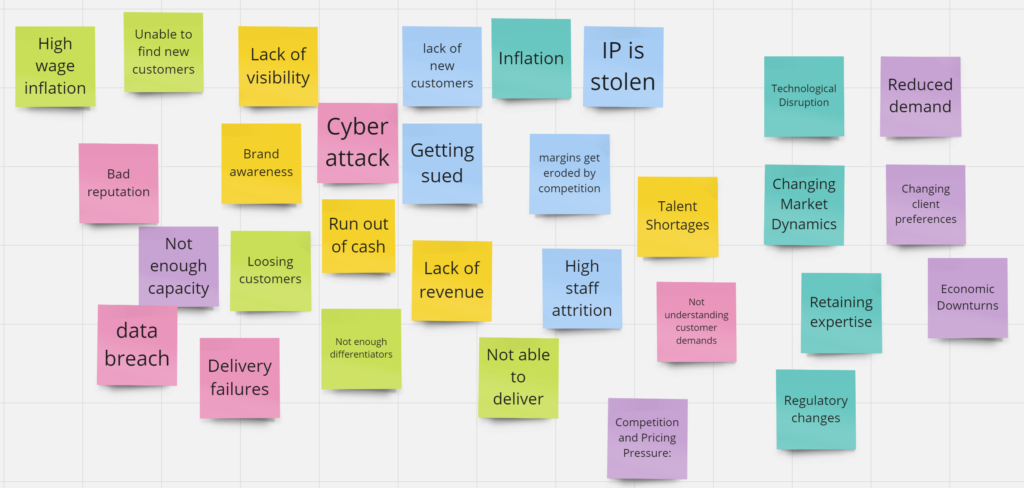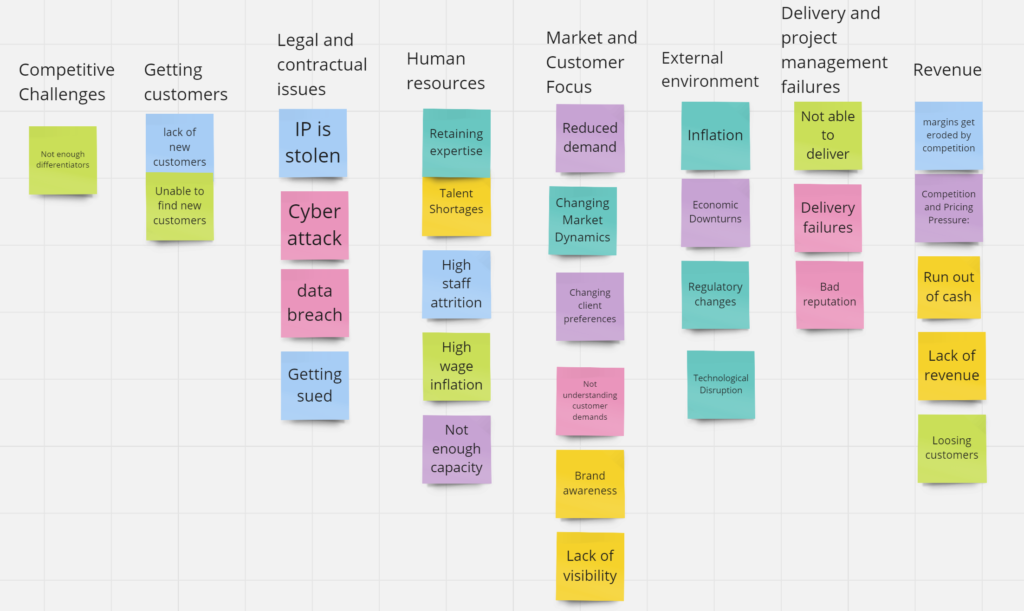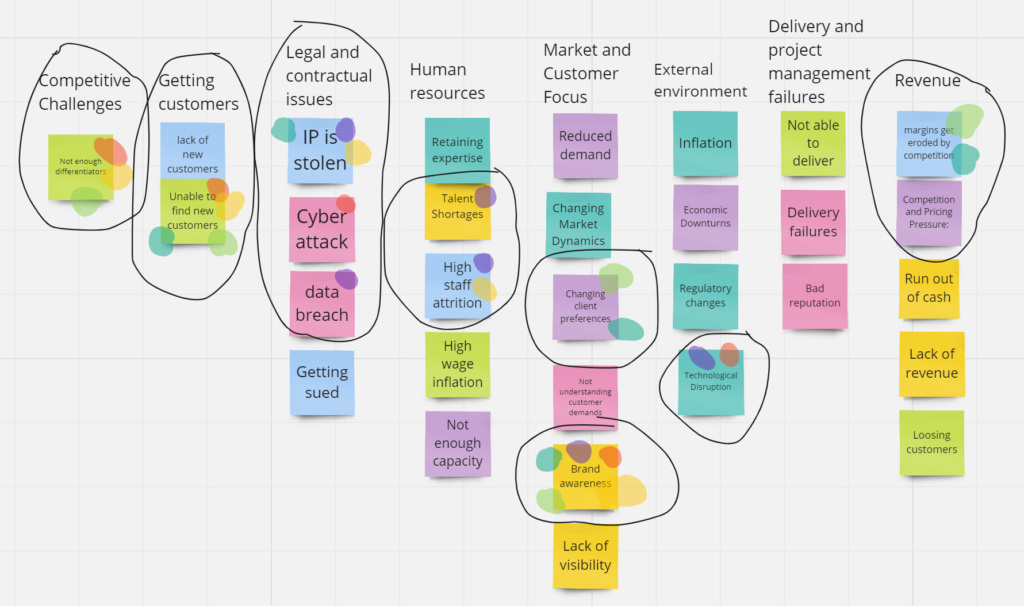
Previously I have written about strategy related techniques using the Business canvas model and SWOT. Another technique I have previously used that can also be useful is called Scenario planning.
This can also be used to identify the transformational needs within an organisation to ensure it stays relevant.
The outcomes of this exercise are a set of plans to ensure that the highest risks to the organisation’s survival are identified and addressed. It involves looking at the risks well into the future which then gives time for any mitigating changes to be recognised and made. Companies that operate in environments with a high degree of uncertainty or face significant potential risks and opportunities will find this technique the most valuable.
I will walk you through the different steps along with a fictional example for a software company.
Step 1
The initial step in this scenario-planning exercise involves a thought-provoking question posed to the senior management team:
“Imagine a decade into the future, and our business no longer exists. What led to this downfall?”
This serves as a brainstorming session, where individuals all jot down their insights silently for a brief 5-minute interval using a collaborative digital tool featuring electronic sticky notes. A shared board allows each participant to contribute their thoughts. The benefits of using this method are it ensures that each participant has an equal opportunity to collaborate, it means that not everyone has to be in the same room and no extra effort to write it up afterwards as already created in an electronic format.
Here is an example using our fictional software company. You will see that each person was given different colour sticky notes to use and will initially look a bit all over the place with some repetition. It’s important to ensure everyone gets their thoughts down to start with, without worrying about its validity or repetition. The next steps will address this.

Step 2
The next step is to get all participants to group similar post it notes together. This then provides the opportunity to show any duplication and cluster together similar themes. Once grouping has been done, labels can be assigned to highlight the different themes that have come up.

Step 3
The subsequent step involved giving each participant 5 votes each using different colour markers to highlight the scenarios they think have the highest likelihood of occurring and the highest impact if it did. It is important to limit each persons votes to prevent all scenarios from having the same prioritisation. Each person should have the same number of votes.
You can see using the example below the scenarios with the highest priority based on this voting system. This sets the stage for a comprehensive discussion on the sticky notes warranting more in-depth consideration and the actions necessary to prevent or mitigate the risks they represent.

Step 4
The goal is to have a well-structured plan by the end of the session, specifically targeting scenarios that pose the greatest risk to the organization’s ability to adapt to future changes.
Assigning ownership for each action and developing a communication strategy to ensure that the planning efforts are not in vain if one of the identified scenarios unfolds is a critical part of this process.
The outcomes of the discussions will determine what actions and plan is put forward. Possible outcomes from some of the examples above could be:
| Risk | Actions | Owner | Status | Updates |
| Lack of new customers | Build compelling content and landing pages on our website | |||
| Lack of new customers | Network with those in the industry we are targeting by attending conferences, organising events and putting together forums. | |||
| Lack of new customers | Update our personas using research | |||
| Lack of new customers | Hire another sales person | |||
| IP is stolen | Trademark product name and look into patents | |||
| Cyber attack | Increase level of cyber insurance |
Conclusion
In summary, scenario planning is a powerful tool for protecting the future of an organisation. It offers a structured approach to identifying the biggest risks to an organisation and enables action plans to be put in place to ensure mitigation.
Thoughts? Questions? Please share in the comments.
